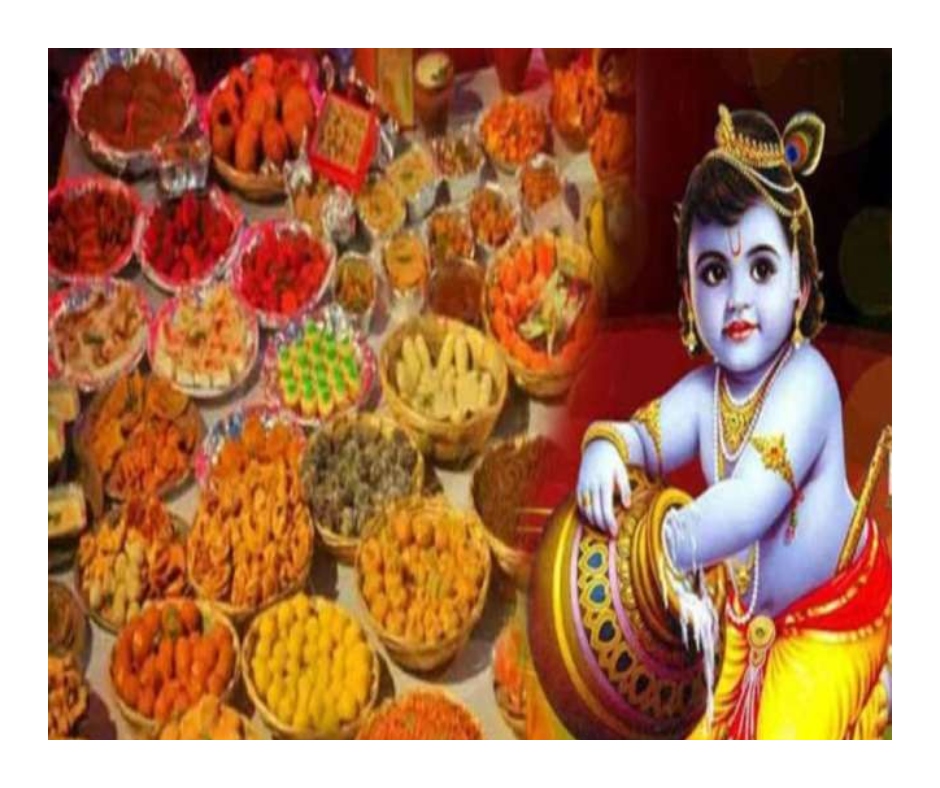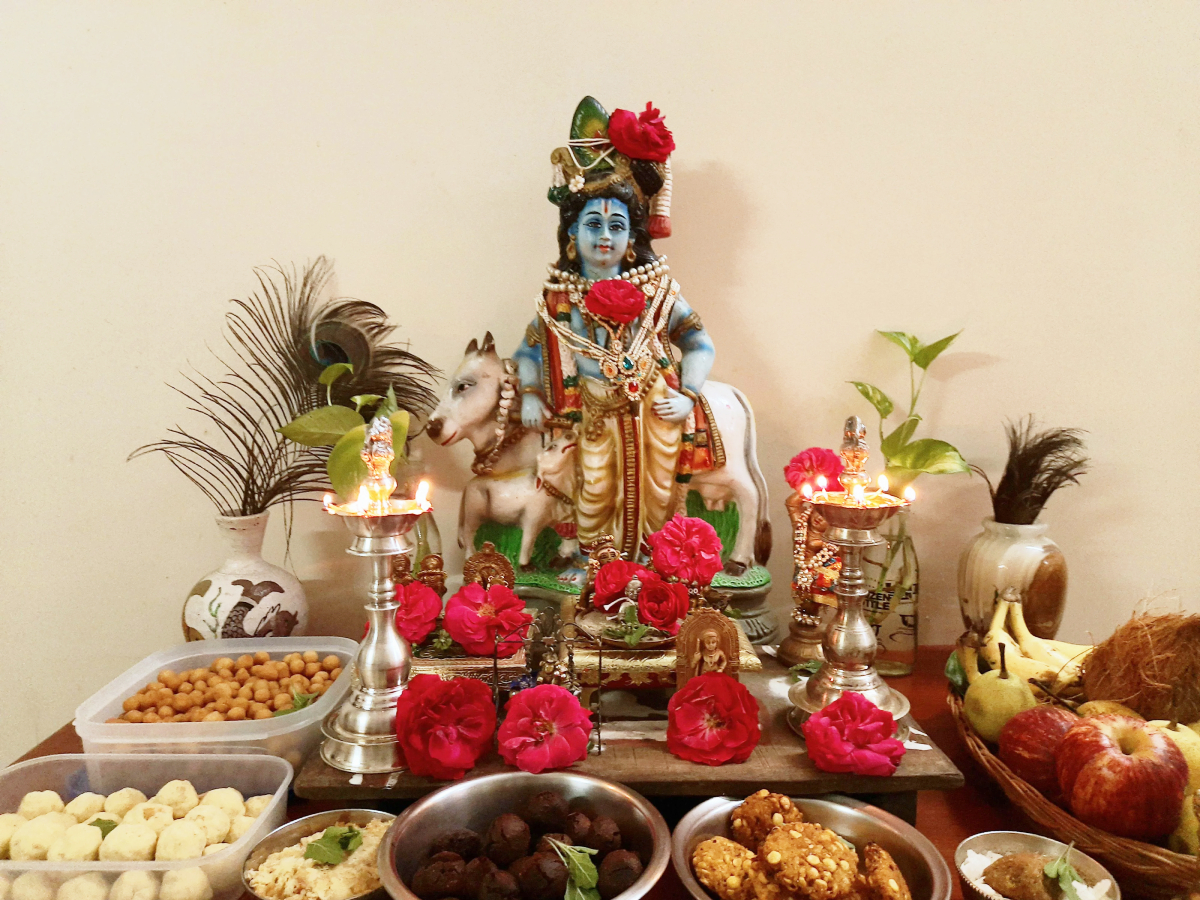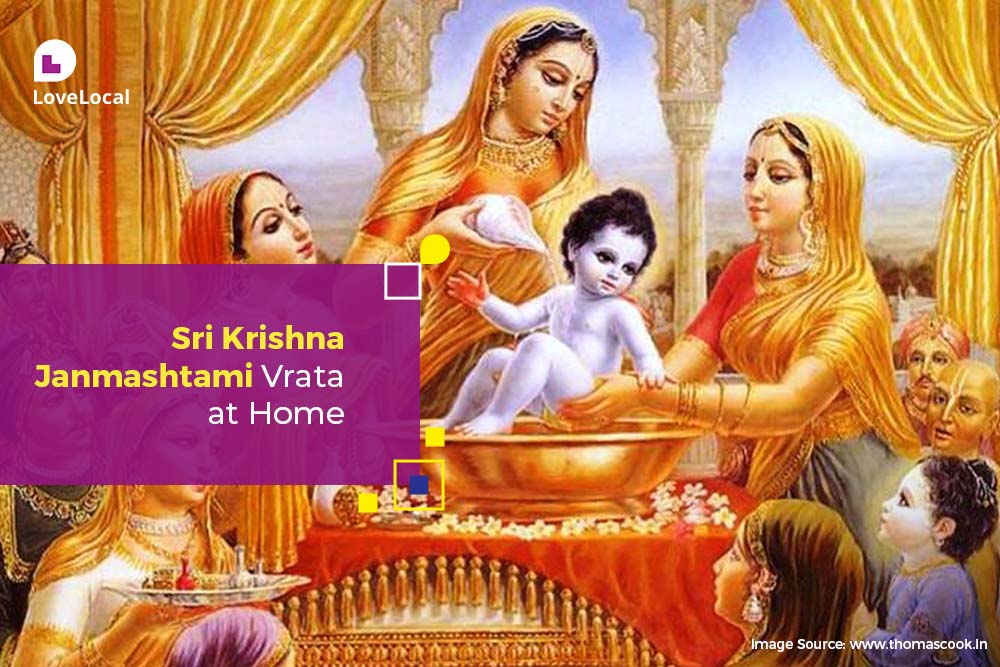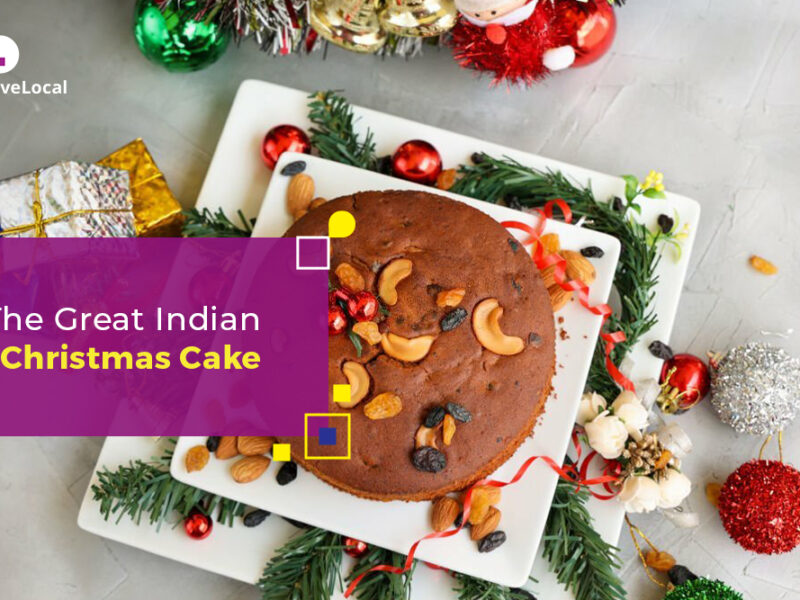Sri Krishna Janmashtami, also known as Gokulashtami or Krishna Jayanti, is a joyous festival that commemorates the birth of Lord Krishna, the eighth avatar of Lord Vishnu. This auspicious occasion is celebrated with immense devotion and enthusiasm across the country. While traditionally observed in temples, celebrating Sri Krishna Janmashtami pooja at home can deepen your connection with the divine and create beautiful memories. Today, we’ll guide you through the significance of Janmashtami, the rituals and preparations for a home pooja, and the joyous celebrations associated with this divine festival.
Significance of Sri Krishna Janmashtami Pooja at Home:
Sri Krishna holds a special place in the hearts of devotees as it marks the birth of Lord Krishna, who is considered a symbol of love, devotion, and righteousness. His teachings in the Bhagavad Gita continue to inspire millions worldwide. The festival signifies the victory of good over evil and the divine intervention that restores dharma (righteousness).

Preparations for Janmashtami Pooja at Home:
1. Cleaning and Decorating:
Begin by thoroughly cleaning your home. Decorate the pooja area with flowers, rangoli (colorful patterns), and decorative items to create a sacred ambiance.
2. Idol or Picture of Lord Krishna:
Place an idol or picture of Lord Krishna Janmashtami home in a clean and sacred corner of your home. You can adorn it with new clothes, jewelry, and garlands.
3. Pooja Items:
During Janmashtami pooja at home, gather essentials like incense sticks, diyas (oil lamps), camphor, fresh fruits, sweets, and tulsi leaves.
4. Pooja Thali:
Prepare a pooja thali with all the necessary items neatly arranged. It can also include items like sandalwood paste, kumkum (vermilion), and sacred water.
5. Offerings:
Lord Krishna’s favourite offerings include butter, milk, curd, fruits, and various sweets. Prepare these offerings with devotion for Janmashtami pooja at home.
6. Janmashtami Fast:
Many devotees observe a fast on Janmashtami. You can choose to observe a partial or complete fast, depending on your health and tradition.
During Janmashtami vrata, devotees follow specific dietary guidelines to honor Lord Krishna’s birth. Here’s what to eat and what to avoid:
Foods to Eat during Janmashtami Pooja at Home :
- Fruits: Fruits like bananas, apples, pomegranates, and oranges are commonly consumed during the vrata.
- Milk and Milk Products: Milk, yogurt (curd), and buttermilk are permitted. Dishes made from these, such as fruit yogurt or sweetened milk, can be consumed.
- Nuts and Dry Fruits: Almonds, cashews, raisins, and other dry fruits are a good source of energy and nutrition during the fast.
- Sweets: Sweets made from milk, like kheer (rice pudding) or peda, are popular choices for offering to Lord Krishna and consuming as prasad.
- Sabudana (Tapioca Pearls): Dishes made from sabudana, such as sabudana khichdi or vada, are commonly enjoyed during the vrata.
- Potatoes: Dishes made from potatoes, such as aloo puri or vrat-friendly potato curry, are a staple during Janmashtami.
- Rock Salt: Regular salt is avoided, but rock salt (sendha namak) is used for seasoning.
- Vrat-Specific Flours: During your fast for Janmashtami pooja at home, consume flours like singhare ka atta (water chestnut flour) and kuttu ka atta (buckwheat flour) are used to make various dishes like puris and parathas.

Foods to Avoid:
- Grains: Regular grains like wheat, rice, and lentils (dal) are avoided during the vrata.
- Onion and Garlic: These pungent vegetables are generally avoided on Janmashtami pooja at home as they are considered rajasic and tamasic.
- Non-Veg and Eggs: Meat, fish, and eggs are strictly prohibited during the vrata.
- Regular Salt: Regular table salt is avoided; instead, rock salt is used.
- Processed and Packaged Foods: Foods that contain additives, preservatives, or artificial flavors should be avoided.
- Spicy and Oily Foods: Heavy and spicy foods are generally avoided, as they can interfere with the spiritual aspect of the vrata.
- Caffeine and Alcohol: Beverages like tea, coffee, and alcoholic drinks are avoided.
- Fried Foods: Deep-fried snacks and dishes are not recommended due to their oily nature.
It’s important to note that the specific dietary restrictions may vary based on personal beliefs, family traditions, and regional practices. Some devotees may choose to have only one meal during the day, while others might have multiple smaller meals on Janmashtami Pooja at Home. The focus of the vrata is on simplicity, self-discipline, and devotion, so the emphasis should be on preparing simple, wholesome, and vrat-friendly dishes.
Rituals of Janmashtami Pooja at Home:
- Sankalp (Pledge): Begin the pooja by taking a sankalp, a vow to perform the rituals with devotion and seek Lord Krishna’s blessings.
- Abhishekam: Perform an abhishekam (ritualistic bathing) of Lord Krishna’s idol with water, milk, curd, ghee, and honey. This symbolizes purification and sanctification.
- Dressing and Decoration: Dress Lord Krishna in new clothes and adorn Him with jewelry and garlands. Offer sandalwood paste, kumkum, and fresh flowers.
- Arti: For Janmashtami pooja at home, light the diyas and incense sticks. Offer aarti to Lord Krishna while chanting his mantras and expressing your love and gratitude.
- Offerings: Present the prepared offerings to Lord Krishna and seek His blessings for your family’s well-being.
- Breaking the Fast: After performing all the rituals of Janmashtami pooja at home, if you’re observing a fast, break it with prasad (blessed food) and distribute it among family members.
Celebrating Sri Krishna Janmashtami:
- Ras Lila: In the evening, enact the Ras Lila, which is a dance drama depicting Lord Krishna’s playful interactions with the gopis (cowherd girls).
- Dahi Handi: Another popular tradition of Janmashtami pooja at home is the Dahi Handi festival, where a pot of curd is hung high, and young men form human pyramids to break it. This recreates Lord Krishna’s mischievous nature as he used to steal butter.
- Chanting and Bhajans: Engage in chanting Krishna bhajans (devotional songs) that glorify the Lord’s divine qualities and stories from his life.
- Sharing Love and Joy: Share the joy of Janmashtami at home with your family, friends, and neighbours. Exchange sweets and prasad with loved ones made for Janmashtami pooja at home.
- Reflection and Devotion: Take some time for self-reflection and contemplate the teachings of Lord Krishna. His wisdom in the Bhagavad Gita can provide guidance for leading a righteous life.

Conclusion:
Observing Sri Krishna Janmashtami pooja at home allows you to create a personal connection with the divine and participate in the joyous Janmashtami celebration at home of Lord Krishna’s birth. Through rituals, devotion, and sharing, this festival becomes a meaningful experience that brings you closer to the teachings and love of Lord Krishna. As you celebrate this auspicious day, may Lord Krishna’s blessings shower upon you and your family, filling your lives. Shop at LoveLocal to support local retailers!


